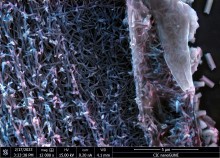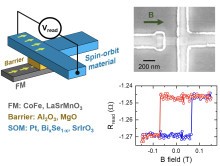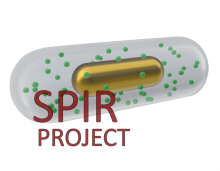Proiektuak
Projects at a Glance
QMOLESR - Addressing molecular spin qubits by ESR-STM
The emergence of ESR-STM has recently opened new perspectives on the coherent manipulation of individual spin qubits. However, to date ESR-STM experiments are essentially focused on individual magnetic atoms deposited on MgO/Ag(100). The insulating layer of MgO seems to be an essential ingredient to obtain addressable and functional single atom qubits, e.g. to fix the spin along certain directions and enable ways for its manipulation. The aim of this project is to go beyond the current restriction of ESR-STM on individual atomic qubits on MgO layers and expand its usage towards robust qubits in other environments. This will be done by using metallo-organic complexes whose organic structure is designed in such a way to play the role of the MgO layer. ESR will be performed on individual magnetic molecules and their potential as molecular spin qubits in contact with metals will be probed. The overall methodology of the project is divided into three main objectives: (1) demonstrate ESR-STM on magnetic molecules; (2) demonstrate ESR-STM on magnetic molecules in direct contact with a metallic substrate and use molecules as magnetic sensors; (3) protection of spin coherence by superconductivity. The impact of the project goes beyond the purely scientific interest and it extends to the industrial sectors of technology and telecommunications. This is because it actually opens the possibility of implementing spintronic devices aimed at storage and manipulation of quantum information in which the individual qubits can be concretely addressed thanks to some type of electrode. Moreover, the coherent control of quantum states is currently under large demand in Europe. In this regard, the highly specialized expertise acquired by the researcher thanks to this project will clearly be an added value in the preparation of his future career. In conjunction with its scientific aim, QMOLESR is designed to train an excellent, independent researcher who will develop his research career.
HYTEM - Organic-inorganic hybrid thermoelectric materials through a new concept of simultaneous vapor phase coating and infiltration (VPI/SCIP)
Polymers and inorganics come together to support novel waste heat harvesting.
Organic-inorganic hybrid materials can significantly enhance the design space for novel functionalities, integrating the best properties of the individual components and even resulting in new ones. Polymers and functional inorganic compounds are the top players in the world of materials science. With the support of the Marie Skłodowska-Curie Actions programme, the HYTEM project will bring them together literally, generating inorganic structures simultaneously in the subsurface of a bulk polymer and on its top surface. The expected result: novel hybrid thermoelectric materials able to scavenge waste heat and turn it into electricity with unparalleled efficiency.
SPECTER - Spin-charge conversion in highly resistive spin-orbit materials
With the current technology of transistors reaching characteristic sizes of a few nanometers, and heating effects becoming more severe, the regular functionality of processors is at stake. In the next few years, new technologies are required to sustain the increasingly high demands imposed by the consumer electronics industry worldwide. Among the wide range of proposed options, spintronics is considered to be one of the leading candidates to fill this gap, backed by recent proposals for spin-based computation using magnetoelectric spin-orbit devices. In these devices, the magnetic state of a ferromagnetic material is read through the conversion of spin currents in charge currents, where two resistance levels can be unambiguously detected depending on the magnetization direction of the ferromagnet, i.e. a “1” and a ”0” state.
SPIR - Spasers in the infrared range
One of the important directions of modern medicine is noninvasive diagnostics. The urgency of the problem is determined by the search of safe methods of examination and sparing techniques of collection of material for medical analysis when the patient does not feel pain, physical and emotional discomfort.
ANTHEM - AdvaNced THErmoelectric Materials through Vapor Phase Infiltration
Waste heat—the rejected by-product of all energy conversion processes—remains a huge and unexplored reservoir of green energy. It is estimated that two-thirds of the 160 TWh required for global power consumption is lost to the environment each year. Converting even a fraction of this wasted energy into electricity at the cost of 10 cents per kWh would generate a new EUR 1.0 trillion industry—creating jobs, boosting the economy, and increasing energy efficiency.
By funding program
Kontaktua

Yurdana Castelruiz
Projects Manager
+ 34 943574022
y.castelruiz[at]nanogune.eu









